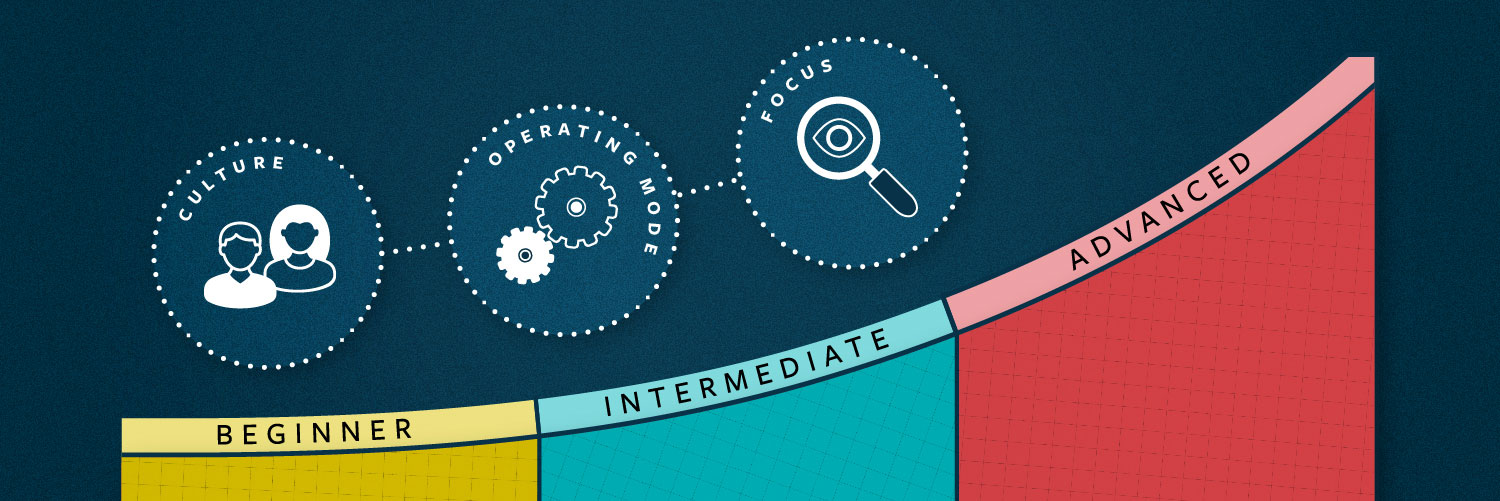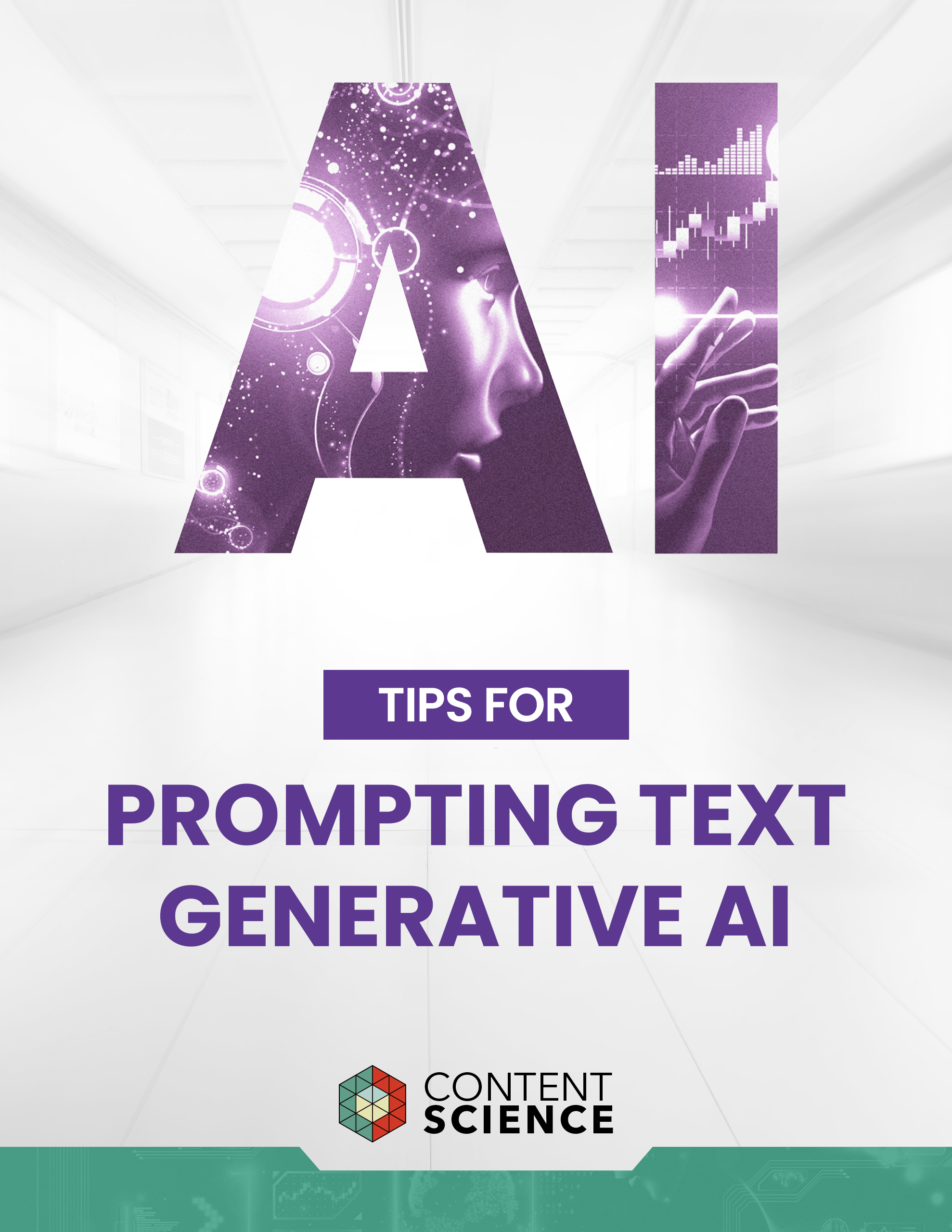
Last month, we shared an overview of some groundbreaking research into nonprofit association content strategy and a maturity model that emerged from the report. No matter where your organization falls on the scale, there are many tactics you can employ to move forward and make real progress towards an integrated, collaborative approach.
This month, we dive into ways to advance your content operations and build on the foundations. These will enable your team to get things done and scale up.
Content Operations 101
Yes, there are plenty of tactics that a nonprofit association can use to start a content strategy practice and move it forward. But tactics are not enough to become an organization with Advanced content strategy. Organizations at the Advanced level of maturity fully incorporate the strategic approach into their everyday work across all divisions, roles, and workflows. That requires thinking of content strategy as more than a series of tactics.
The tactics make it possible to get things done. Operationalizing the content strategy means getting the people, processes, and technology aligned to consistently publish and govern information.
Start with people
People need to have the right skills to produce effective content. Very few people who are responsible for creating content that ends up on websites and in products were trained to do this. Some learn on their own, but most are not even aware that there are guidelines or best practices they could follow.
Organizations can start by including responsibilities and accountabilities for content in the org chart and in job descriptions. Someone needs to be in charge of the content strategy across all departments. Others need to have the skills to implement the strategy, whether through training or coming to the job with competence.
Processes provide consistency
With the right content personnel in place, processes need to be put in place that establish and enforce a content lifecycle. All content needs to have a standard lifecycle of create, publish, measure. The processes within that lifecycle depends on the size of an organization, its goals, its people, and its budget. Some things to ask when establishing content processes:
- Who decides what content to create?
- What criteria need to be met for content to be created?
- How does each type of content get created, edited, and published?
- How often does content that’s been published get reviewed?
- What are the criteria for unpublishing, updating, or rewriting a piece of content?
Remember, this is not just web or marketing content. If your organization publishes books, journals, or magazines, these processes already exist. Borrow from those departments to set standards and policies for your department. Think more broadly too. To effectively execute a content strategy, coordination of all content types is essential. You will need many layers of processes that all work together.
Technology supports the people and processes
Once you have the people set up for success and processes established, you likely will need some technology to support the work to be done. To have effective and efficient content operations, it is imperative that technology supports the people and processes as well as the type of content you are publishing.
Software will not solve people problems. Avoid shiny object syndrome.
Start with asking, “What software will support us?” This will get you farther than “Is this the best software for us?” When you start with requirements based on who will use the software and what the processes are, you are more likely to get a better match. You might even find that your existing software could be reconfigured to support you. People hate their software because it makes their job harder. If software makes their job easier, they will love it–or at least use it without much complaint.
Technology can also streamline your processes by working in synchronization with each other. Make sure the right stakeholders are involved in selection of tools. Among the technology products that manage content are:
- Content management systems (CMS)
- Association management systems (AMS)
- Customer relationship systems (CRM)
- Ecommerce tools
- Marketing automation tools
- Email tools
- Learning management systems (LMS)
- Analytics programs
Even if you only have two or three of those, what if they could work with each other? No more entering information multiple times. Data and information get shared across the systems and are available immediately when you need them. It’s hard to imagine this nirvana, isn’t it? Certainly, it is not easy to make this happen but working toward the goal will improve productivity, effectiveness, and morale. When technology is working well, it leaves humans time to do things only humans can do.
It’s Up to You
Anyone reading this can make progress toward an Advanced level of maturity for your organization. But no single person will achieve it on their own. It means managing up, down, and sideways. Start with a small number of allies around the organization. Share what you learn–from failures and successes. Many associations at the Intermediate level were working without authority to do the strategy work. They were merely doing their work in a way that worked for them. Focus on progress, not perfection.
Once you reach critical mass and want to strive toward the Advanced level, you need to get the people at the top on board. And not just to approve a content strategy project. The C-suite needs to be the main champion for the effort. To get buy-in at the top, you’ll need to speak the language of those people. Talk to them about growing the business, reducing waste. Talk about results. Paint a picture of the future for them. Do not mention “content operations” or “content strategy.” When you focus on what keeps them up at night, you have a much better chance of gaining their sponsorship for your content initiatives.
Events, Resources, + More
Workshop: Are You Ready for AI?
Is your organization really ready for AI at scale? Let the Content Science team guide your leaders through assessing 4 areas of readiness.
Course: Prompting Text Generative AI
Learn how to bring out the full potential of text generative AI to create impactful content from this on-demand course.
Webinar: Benchmarks for Content Effectiveness
It's not about more content. It's about more effective content. Gain tips based on Content Science's unique research + experience.
The Ultimate Guide to End-to-End Content
Discover why + how an end-to-end approach is critical in the age of AI with this comprehensive white paper.






Comments
We invite you to share your perspective in a constructive way. To comment, please sign in or register. Our moderating team will review all comments and may edit them for clarity. Our team also may delete comments that are off-topic or disrespectful. All postings become the property of
Content Science Review.